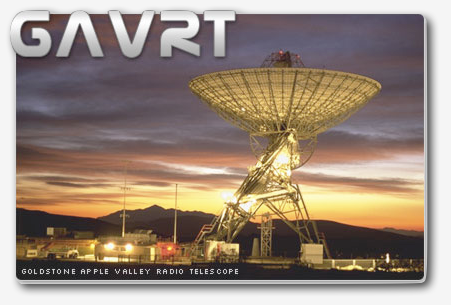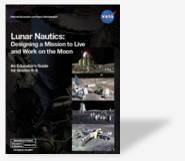 From July 18-22, 2011, 12 NASA Explorer Schools educators participated in the NES Goldstone Apple Valley Project located at the Lewis Center in Apple Valley, Calif.
From July 18-22, 2011, 12 NASA Explorer Schools educators participated in the NES Goldstone Apple Valley Project located at the Lewis Center in Apple Valley, Calif.Link to the NES Virtual Campus participant’s home page.
 From July 18-22, 2011, 12 NASA Explorer Schools educators participated in the NES Goldstone Apple Valley Project located at the Lewis Center in Apple Valley, Calif.
From July 18-22, 2011, 12 NASA Explorer Schools educators participated in the NES Goldstone Apple Valley Project located at the Lewis Center in Apple Valley, Calif.Link to the NES Virtual Campus participant’s home page.
 From July 11-15, 2011, fourteen highly enthusiastic educators participated in the NES Coastal Observation Research Experience at NASA’s Wallops Flight Facility, located at Wallops Island, Virginia.
From July 11-15, 2011, fourteen highly enthusiastic educators participated in the NES Coastal Observation Research Experience at NASA’s Wallops Flight Facility, located at Wallops Island, Virginia.Link to the NES Virtual Campus participant’s home page.
Link to the NES Virtual Campus participant’s home page.
 NASA Explorer Schools is kicking off the 2011-2012 school year with the very first electronic professional development Web seminar — Lunar Nautics. The event takes place on July 21, 2011, at 9:30 a.m. EDT. It highlights three featured lessons from the Lunar Nautics educator guide, one of the most popular NES middle school teaching materials:
NASA Explorer Schools is kicking off the 2011-2012 school year with the very first electronic professional development Web seminar — Lunar Nautics. The event takes place on July 21, 2011, at 9:30 a.m. EDT. It highlights three featured lessons from the Lunar Nautics educator guide, one of the most popular NES middle school teaching materials:Direct link to the Lunar Nautics registration page.
If you’d like to be eligible to participate in a NASA research experience next summer, become an NES participant by completing the registration form on the NES Virtual Campus.
Link to the NES Virtual Campus home page.
 On July 15, NASA’s ion-propelled Dawn probe became the first spacecraft to enter orbit around a main-belt asteroid. Dawn will orbit Vesta for one Earth-year, studying the giant space rock at close range to help scientists understand the earliest chapter of our solar system’s history.
On July 15, NASA’s ion-propelled Dawn probe became the first spacecraft to enter orbit around a main-belt asteroid. Dawn will orbit Vesta for one Earth-year, studying the giant space rock at close range to help scientists understand the earliest chapter of our solar system’s history.
Link to the NES Virtual Campus participant’s home page.

 On June 20-24, 2011, 20 educators participated in the Wallops Rocket Academy for Teachers and Students, or WRATS, at NASA’s Wallops Flight Facility, located at Wallops Island, Virginia. Of the 20 participants, 10 were NASA Explorer Schools educators who have been recognized for their best practices in using the Rockets Educator Guide content module on the NES Virtual Campus.
On June 20-24, 2011, 20 educators participated in the Wallops Rocket Academy for Teachers and Students, or WRATS, at NASA’s Wallops Flight Facility, located at Wallops Island, Virginia. Of the 20 participants, 10 were NASA Explorer Schools educators who have been recognized for their best practices in using the Rockets Educator Guide content module on the NES Virtual Campus. Michelle Harrison (shown in the picture to the right), NES participant from Holly Grove Christian School, commented on how the WRATS workshop gave her the confidence to use the Rockets Educator Guide content module in her classroom.
Link to the NES Virtual Campus home page.
 “Because It Flew,” or BIF, is a free educational program that introduces students in grades 4-12 (ages 9-17) to the impact of the Space Shuttle Program on our planet and people. This engaging and informative project commemorates the 30-year history of the shuttle program. BIF consists of two elements: optional educational activities and the NASA Space Shuttle Art Competition. Entries in the competition are due Aug. 5, 2011. BIF is a joint education initiative of NASA, the National Institute of Aerospace and USA Today Education.
“Because It Flew,” or BIF, is a free educational program that introduces students in grades 4-12 (ages 9-17) to the impact of the Space Shuttle Program on our planet and people. This engaging and informative project commemorates the 30-year history of the shuttle program. BIF consists of two elements: optional educational activities and the NASA Space Shuttle Art Competition. Entries in the competition are due Aug. 5, 2011. BIF is a joint education initiative of NASA, the National Institute of Aerospace and USA Today Education.
For more information, visit www.usatodayeducate.com/becauseitflew.
If you have any questions about this contest, please e-mail Jan Brown.
Link to the NES Virtual Campus home page.

What’s Next for NASA
In just a couple of hours, I am delivering an address at the National Press Club to talk about NASA’s future, and before I do so, I wanted to share with you what I’m going to be discussing. You can also watch the speech at 1:00 p.m. EDT on NASA TV or the Web, or if you are at Headquarters, in the James Webb Auditorium.Next week, NASA will launch its final Space Shuttle mission, turning the page on a remarkable period in America’s history in space, while beginning the next chapter in our nation’s extraordinary story of exploration. From the early exploits of Daniel Boone, Lewis and Clark and Robert Peary to the breakthrough journeys of Alan Shepard and John Glenn, Americans have always been a curious people — bold enough to imagine new worlds, ingenious enough to chart a course to them and courageous enough to go for it. And the gifts of knowledge and innovation that we have brought back from the unknown have played their part in the building of our more perfect union.Some say that our final shuttle mission will mark the end of America’s 50 years of dominance in human spaceflight. As a former astronaut and the current NASA Administrator, I want to tell you that American leadership in space will continue for at least the next half-century because we have laid the foundation for success — and here at NASA failure is not an option.President Obama has given us a Mission with a capital “M” — to focus again on the big picture of exploration and the crucial research and development that will be required for us to move beyond low Earth orbit. He’s charged us with carrying out the inspiring missions that only NASA can do, which will take us farther than we’ve ever been — to orbit Mars and eventually land on it. He’s asked us to start planning a mission to an asteroid, and right now our Dawn spacecraft is approaching one of the biggest in the solar system, Vesta. What it finds out could help inform such a mission.The President is asking us to harness that American spirit of innovation, the drive to solve problems and create capabilities that is so embedded in our story and has led us to the Moon, to great observatories, and to humans living and working in space, possibly indefinitely. That American ingenuity is alive and well, and it will fire up our economy and help us create and win the future now.So when I hear people say — or listen to media reports — that the final shuttle flight marks the end of U.S. human spaceflight, I have to say . . . these folks must be living on another planet. We are not ending human spaceflight, we are recommitting ourselves to it and taking the necessary — and difficult — steps today to ensure America’s pre-eminence in human spaceflight for years to come.I spent 14 years at NASA before leaving and then returning to head the agency. Some of the people I respect most in the world are my fellow astronauts. Some of my best friends died flying on the shuttle. I’m not about to let human spaceflight go away on my watch. And I’m not going to let it flounder because we pursued a path that we couldn’t sustain.We have to get out of the business of owning and operating low Earth orbit transportation systems and hand that off to the private sector, with sufficient oversight to ensure the safety of our astronauts. American companies and their spacecraft should send our astronauts to the ISS, rather than continuing to outsource this work to foreign governments. That is what I am committed to and that is what we are going to do.Along with supporting the ISS and commercial crew transportation, NASA will pursue two critical building blocks for our deep space exploration future — a deep space crew vehicle and an evolvable heavy-lift rocket. As you know, we have made a decision to base the new multi-purpose crew vehicle, or MPCV — our deep space crew module — on the original work we’ve done on the Orion capsule. We’re nearing a decision on the heavy lift rocket, the Space Launch System, or SLS, and will announce that decision soon.Our destinations for humans beyond Earth remain ambitious. They include: the Moon, asteroids, and Mars. The debate is not if we will explore, but how we’ll do it. The International Space Station is the centerpiece of our human spaceflight for the coming decade. Every research investigation and all of the systems that keep the ISS operational help us figure out how to explore farther from our planet and improve life here.And we have a huge number of amazing science missions coming up. We’ll advance aeronautics research to create a safer, more environmentally friendly and efficient air travel network.NASA is moving forward and making change because the status quo is no longer acceptable. President Obama has outlined an urgent national need to out-innovate, out-educate, and out-build our competitors and create new capabilities that will take us farther into the solar system and help us learn even more about our place in it. NASA is ready for this grand challenge.As we go into this Independence Day holiday weekend, my thoughts are on what it means to be an American and this great responsibility we have to our country. For those of us in public service, it is a commitment to serve our country. Thank you for your work and your dedication; we would not have this amazing, American space program if it were not for people like you. Have a wonderful and safe holiday and may God bless America!
Charlie B.